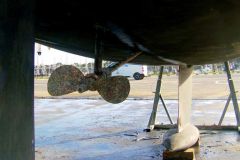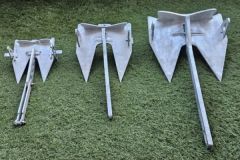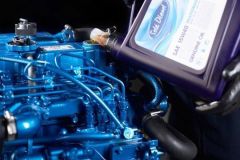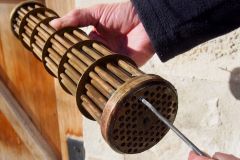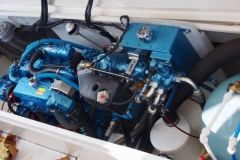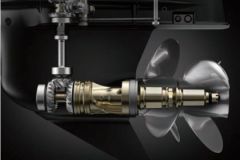An engine running out of oil
Janine and Georges have just acquired their new boat, le Croque soleil II . They set off to ferry him to his new home port, but the sea was getting rougher and the crew had to react:
- Georges, hurry up and start the engine - we'll never get the jib down in these conditions.
- Okay, here we go! I'm off.
- Why does the alarm keep sounding?
- I don't know: it's the oil pressure sight glass.
- Stop before you break the engine! Quick, let's get under the cape and see what's going on!
Georges jumps into the cabin and locks himself inside the boat. The Croque soleil II is in the middle of the Bay of Biscay, one more crossing for this seasoned crew who know this sailing area well. But in this case, they left a little late, at the beginning of winter. Georges is starting to get a bit nauseous in this confined area. No choice! A little concentration is needed. Bending over backwards in the engine room, he starts by checking the oil level. Seasickness subsides with the weight of responsibility. With an engine down, there's no time to lose: he's going to have to get it going again by any means necessary. With a goal to reach, the high spirits are already dissipating. He pulls out the dipstick, and the level doesn't even appear! Almost relieved to have found the source of the breakdown, Georges grabs the engine oil can, unscrews the cap from the cylinder head cover and starts filling up with oil. At the first roll, half the canister covers the engine. Georges opens the descent panel and asks Janine:
- Janine, do you have a funnel?
- No, it's in the cockpit trunk, I couldn't open it there...
Just then, a wave sweeps across the beam of the boat and fills the cabin. Georges quickly closes the hatch, and starts again. A little oil on the engine, a little oil in it. Eventually, the level is reached. He closes the filler cap, quickly wipes the oil from the engine, and signals Janine to start.
The engine starts, the boat veers to windward, and Janine at the bow furls the jib in this early storm. At the end of the maneuver: BIIPPP. The engine alarm sounds again, and it's oil pressure again!
Le Croque soleil II has three reefs in the mainsail, and the storm jib has just been hoisted. She continues on her way more serenely, but the engine has broken down again.
- Janine, let's start again, I'm diving into the machine to find out where all this oil is going.
- Okay, I'll stay at the helm.
Georges pulls the dipstick again: no oil! He fills the engine again to the max level. A little oil inside, a little oil on the engine. He wipes the engine down more thoroughly, and asks Janine to start the engine.
VRROOOUUUMMMMM
The oil in the sump is drawn through the strainer. It meets the pump blades and is propelled into the filter. As it leaves the filter, free of impurities, it begins its circuit through the engine pipes. Part of it goes to the crankshaft: connecting rod heads, trunnions and connecting rod base sprinklers are irrigated, and the connecting rod/crank assembly is properly lubricated without any problems. The other part goes to the top of the engine for the valves and camshaft contained in the rocker cover. Rocker cover, which... leaks a lot. In fact, Georges can see a trickle of oil gushing from the rear of the engine. The cylinder-head gasket is H.S.
The fault has been identified, and the crew will be able to return to port with peace of mind, as the problem will have been solved in time and the engine will no longer be short of oil.
How to check that the lubrication system is working properly
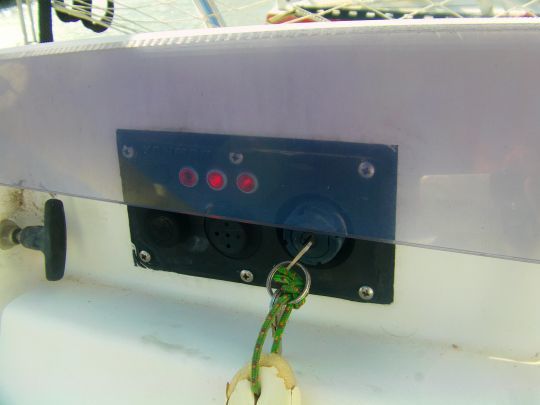
The lubrication system must maintain a pressure of at least 3 bar to operate correctly. If this pressure drops, the engine oil will no longer circulate properly, and moving parts will heat up and eventually come to a standstill. In other words: engine failure.
Oil pressure alarms are therefore essential to check when starting up the engine. There are two types: audible and visual. An oil pressure gauge is also an excellent way of checking oil pressure, but not all boats are equipped with one.
Therefore, to avoid breaking the motor, it must be stopped immediately if :
-
an alarm sounds
-
red oil pressure indicator lights up
-
or if oil pressure drops on the pressure gauge.
How to deal with oil pressure failure
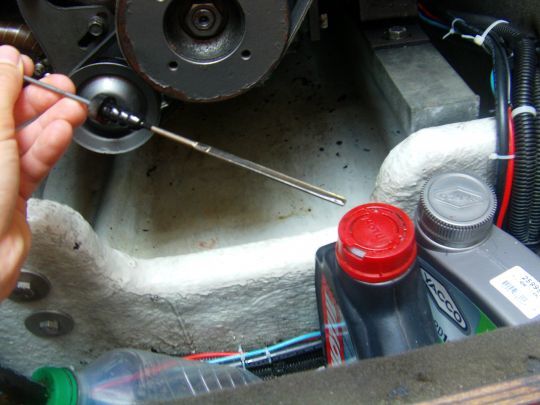
The engine is stopped in an emergency, as an alarm signals a lack of oil. What to do? First, check that there's enough oil, using the dipstick. If oil is missing, top it up and check for visible leaks. If there's enough oil and the engine still goes into alarm, check that the oil filter isn't clogged.
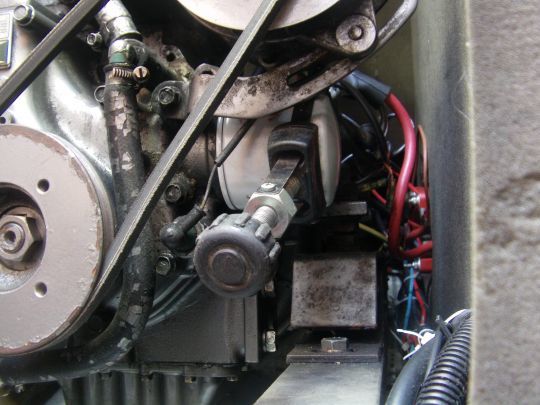
To check it, disassemble it and visually inspect it for dirt. If it appears clogged, or if there's any doubt about its condition, replace it with a new one.
With an engine full of oil and an oil filter in good condition, you'll have done everything you can to get it running again. If, however, the alarm sounds again, don't take the risk of running your engine without oil. You'll need to consult a mechanic as soon as possible.
Maintaining the lubrication circuit
For trouble-free cruising, it's important to maintain your engine to avoid breakdowns as far as possible. Maintenance consists of changing the oil and filter every year, or as many hours of use as the manufacturer recommends.
A visual check for leaks will also warn you of an oil shortage. At the slightest doubt, if a leak is identified, replacing the seal in question will prevent your engine from going into alarm.





